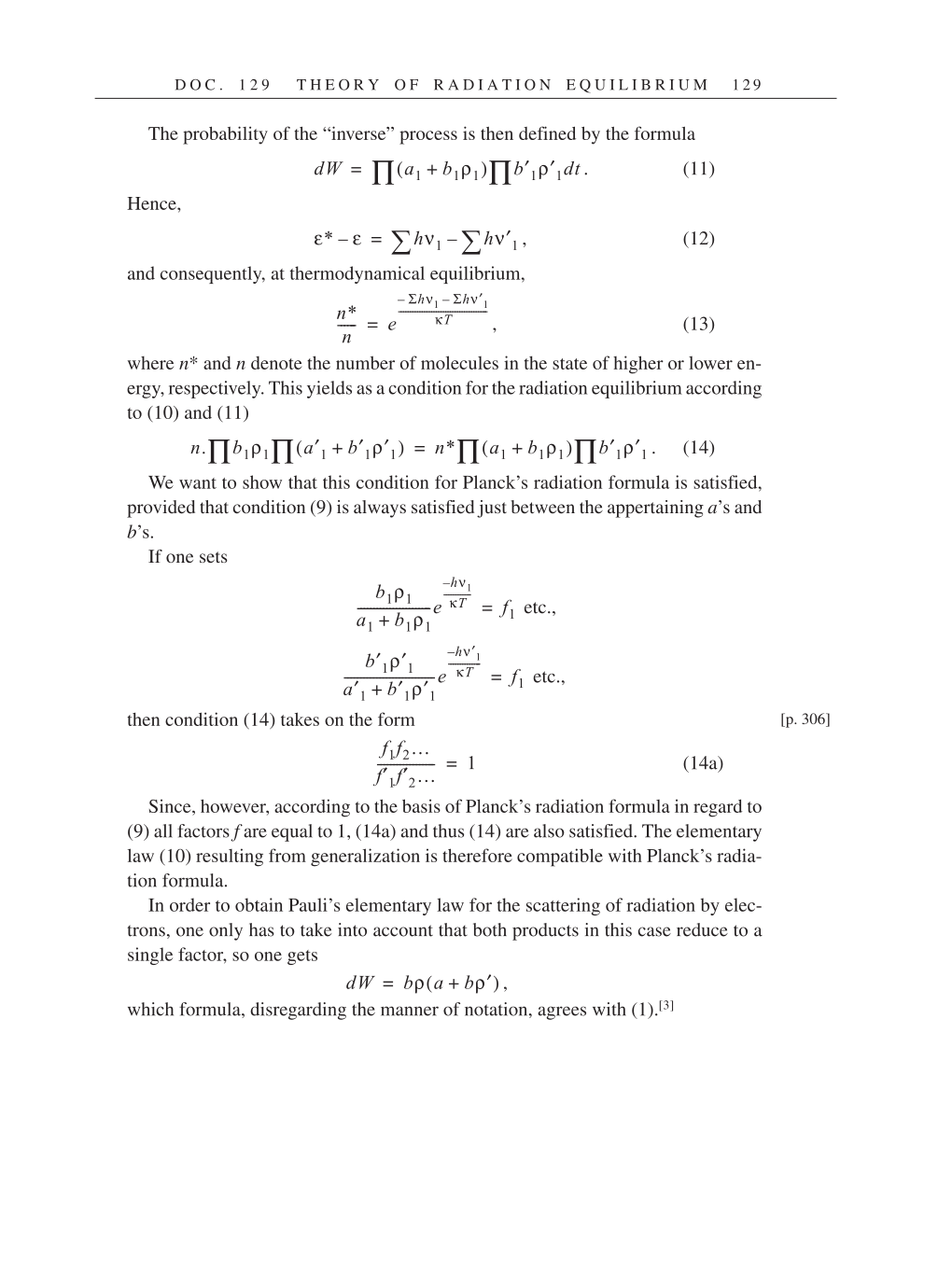D O C . 1 2 9 T H E O R Y O F R A D I A T I O N E Q U I L I B R I U M 1 2 9
The probability of the “inverse” process is then defined by the formula
. (11)
Hence,
, (12)
and consequently, at thermodynamical equilibrium,
, (13)
where n* and n denote the number of molecules in the state of higher or lower en-
ergy, respectively. This yields as a condition for the radiation equilibrium according
to (10) and (11)
. (14)
We want to show that this condition for Planck’s radiation formula is satisfied,
provided that condition (9) is always satisfied just between the appertaining a’s and
b’s.
If one sets
etc.,
etc.,
then condition (14) takes on the form
(14a)
Since, however, according to the basis of Planck’s radiation formula in regard to
(9) all factors f are equal to 1, (14a) and thus (14) are also satisfied. The elementary
law (10) resulting from generalization is therefore compatible with Planck’s radia-
tion formula.
In order to obtain Pauli’s elementary law for the scattering of radiation by elec-
trons, one only has to take into account that both products in this case reduce to a
single factor, so one gets
,
which formula, disregarding the manner of notation, agrees with (1).[3]
dW a1 b1ρ1) + ( b′1ρ′1dt
∏∏
=
ε* ε –
¦hν′1
–
¦hν1
=
n*
n
----- - e
κT
--------------------------------------1ν′hΣ–1νhΣ–
=
n. b1ρ1 a′1 b′1ρ′1) + (
∏∏
n* a1 b1ρ1) + ( b′1ρ′1
∏∏
=
b1ρ1
a1 b1ρ1 +
---------------------- -e
–hν
κT
-----------1-
f1 =
b′1ρ′1
a′1 b′1ρ′1 +
----------------------------e
–hν′
κT
-------------1-
f1 =
[p. 306]
f1f2…
f′1f′2…
------------------ 1 =
dW bρ( a bρ′) + =
